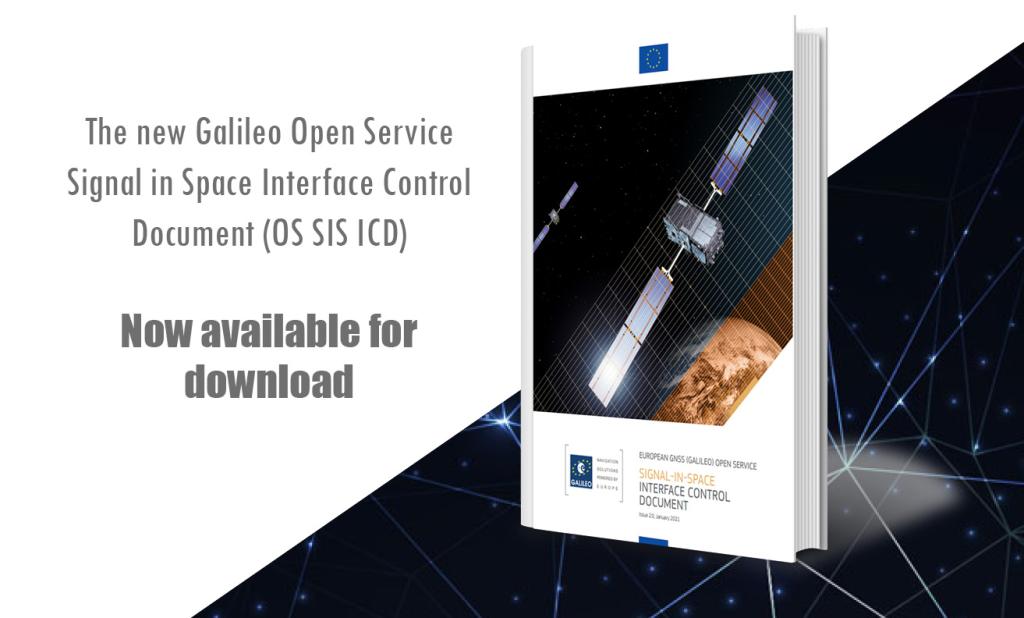Updated Galileo OS SIS ICD now available
Disclaimer
This page has been archived and is provided for historical reference purposes only. The content and links are no longer maintained and may now be outdated.

We are pleased to announce the release of the new Galileo Open Service Signal in Space Interface Control Document (OS SIS ICD v2.0). This second issue of the document is available for download in the Programme Reference Documents section of the European GNSS Service Centre (GSC) web portal.
The OS SIS ICD is geared towards Galileo receiver manufacturers and it specifies the interface between the Galileo Space Segment and the Galileo User Segment.
What’s new?
This new issue of the OS SIS ICD introduces major updates for all Galileo Open Service users. In particular, three new features are introduced to the I/NAV message transmitted on the Galileo E1-B signal component:
- Reduced Clock and Ephemeris Data (RedCED);
- Reed-Solomon Outer Forward Error Correction Data (FEC2); and
- Secondary Synchronization Pattern (SSP).
These new features represent a major evolution of the Galileo Open Service signals, which will provide all users with a more robust and faster retrieval of the Clock and Ephemeris Data, particularly for users in challenging environments, while at the same time allowing for a faster reconstruction of the Galileo System Time (GST).
This will result in a faster Time to First Fix for users whose receivers are able to exploit the new solutions. The new solutions are fully backward compatible, as they take advantage of parts of the I/NAV message previously marked as spare or reserved. This means that there will be no impact on legacy users and receivers that do not process these spare/reserved fields.
Advance preparation
Although these modified signals are not yet being broadcast by the Galileo satellites, this document will allow receiver manufacturers to prepare in advance. The Galileo Programme intends to support receiver manufacturers with the implementation of the new I/NAV capabilities, including by means of dedicated testing campaigns to be carried out in 2021-2022. The Galileo system is set to begin transmitting the new I/NAV capabilities by 2023.
The GSA will communicate with users through the usual channels about these possibilities in due time. For more details, please contact the Galileo Help Desk. Moreover, if you wish to receive NAGUs and notifications about new Galileo publications, please register on the GSC web portal and subscribe to our Newsletters.
Media note: This feature can be republished without charge provided the European GNSS Agency (GSA) is acknowledged as the source at the top or the bottom of the story. You must request permission before you use any of the photographs on the site. If you republish, we would be grateful if you could link back to the GSA website (http://www.gsa.europa.eu).